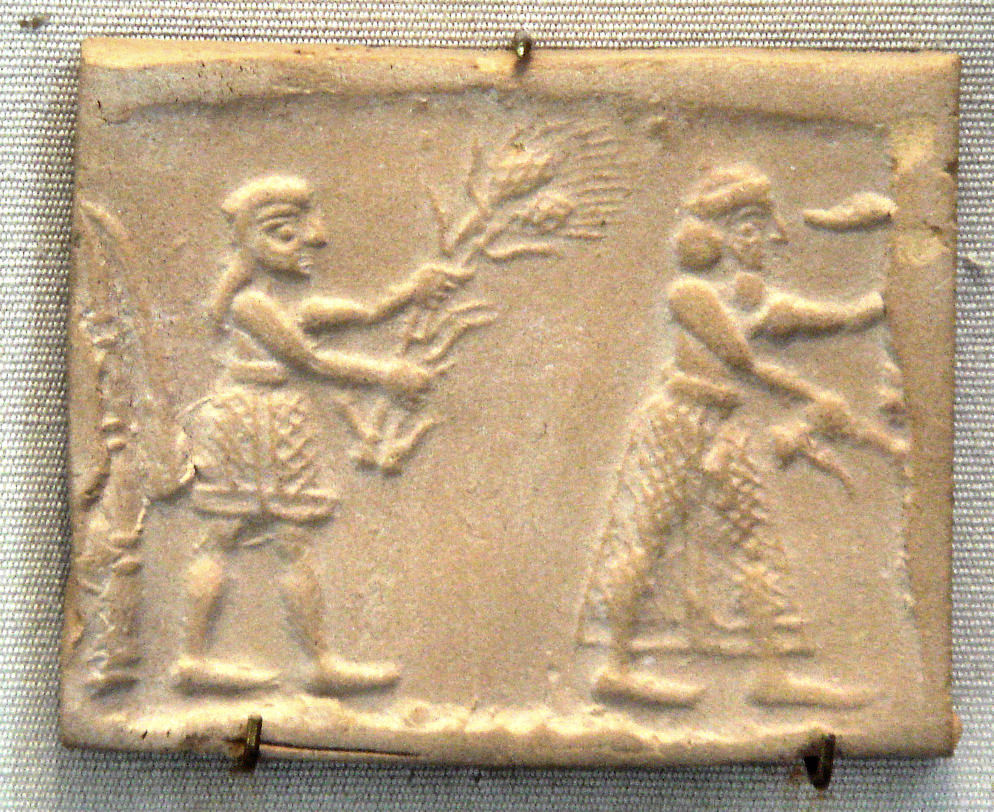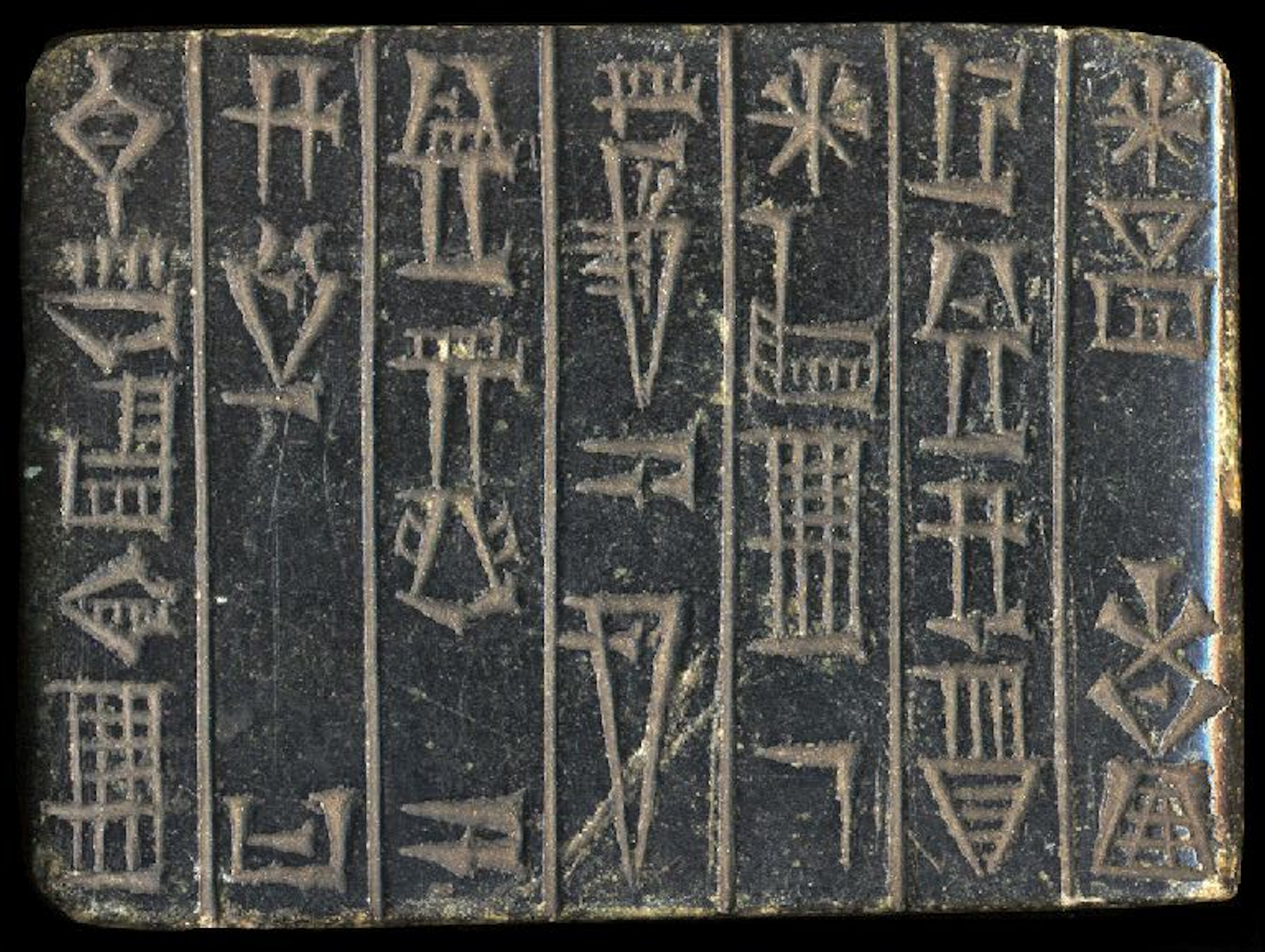|
Enentarzi
Enentarzi (, ''en-enŌéā-tar-zid'', also , ''en-e-tar-zi'' was '' Ensi'' (governor) of Lagash. He was originally a chief-priest of Lagash for the god Ningirsu. He succeed Enannatum II who only had a short reign and was the last representative of the house of Ur-Nanshe. It seems that the power of Lagash waned at this point, and that other territories such as Umma ("Gishban") and Kish prevailed. Enentarzi probably ruled for at least 4 years. An inscription records that 600 Elamites came to plunder Lagash during the rule of Enentarzi, but that they were repelled. He was succeeded by another priest named Enlitarzi, and then his son Lugalanda Lugalanda, also Lugal-anda ( sux, ) was a Sumerian king of Lagash during the 24th century BC. Lugalanda was the son of the high priest of Lagash, who appointed him as king. At this time the high priests of Lagash were very influential, and ei .... References Kings of Lagash 25th-century BC Sumerian kings {{AncientNearEas ... [...More Info...] [...Related Items...] OR: [Wikipedia] [Google] [Baidu] |
Enannatum II
Enannatum II ( sux, , ), son of Entemena, was '' Ensi'' (governor) of Lagash. Only a few inscriptions of Enannatum II are known, suggesting a short reign. One of these inscriptions, of which four nearly identical instances are known, appears on a door socket from the great storehouse of Ningirsu at Lagash, which he restored: He had a son named Lummadur, the last representative of the house of Ur-Nanshe, who apparently never held an official title. It seems that the power of Lagash waned at this point, and that other territories such as Umma ("Gishban") and Kish prevailed. Enannatum II was the last member of the family of Ur-Nanshe. He was succeeded by a priest named Enentarzi. File:Inscribed head of a mace with Imdugud (Anzu) and Enannatum, the British Museum, London..JPG, Inscription on the mace head, possibly dedicated to Enannatum II: "For Ningirsu of E-ninnu, the workman of Enannatum, ruler of Lagash, Barakisumun, the ''sukkal'', dedicated this for the life of Enanna ... [...More Info...] [...Related Items...] OR: [Wikipedia] [Google] [Baidu] |
Lagash
Lagash (cuneiform: LAGA┼ĀKI; Sumerian: ''Laga┼Ī''), was an ancient city state located northwest of the junction of the Euphrates and Tigris rivers and east of Uruk, about east of the modern town of Ash Shatrah, Iraq. Lagash (modern Al-Hiba) was one of the oldest cities of the Ancient Near East. The ancient site of Nina (Tell Zurghul) is around away and marks the southern limit of the state. Nearby Girsu (modern Telloh), about northwest of Lagash, was the religious center of the Lagash state. Lagash's main temple was the E-ninnu, dedicated to the god Ningirsu. Lagash seems to have incorporated the ancient cities of Girsu, Nina, Uruazagga and Erim. History From inscriptions found at Girsu such as the Gudea cylinders, it appears that Lagash was an important Sumerian city in the late 3rd millennium BC. It was at that time ruled by independent kings, Ur-Nanshe (24th century BC) and his successors, who were engaged in contests with the Elamites to the east and the kings of '' ... [...More Info...] [...Related Items...] OR: [Wikipedia] [Google] [Baidu] |
Lugalanda
Lugalanda, also Lugal-anda ( sux, ) was a Sumerian king of Lagash during the 24th century BC. Lugalanda was the son of the high priest of Lagash, who appointed him as king. At this time the high priests of Lagash were very influential, and either occupied the throne, or decided who should. The priests, especially the high priests, remained very influential during Lugalanda's reign. Lugalanda was married to Baranamtarra, the daughter of a great landowner who had commercial connections with the queen of Adab. All documents mentioning the reign of Lugalanda describe him as a wealthy and corrupt king. They say his reign was a time of great corruption and injustice against the weak. Inscriptions state that the king confiscated approximately 650 Morgen (up to 650 hectares) of land. After nine years in power, Lugalanda was overthrown by Urukagina Uru-ka-gina, Uru-inim-gina, or Iri-ka-gina ( sux, ; 24th century BC, middle chronology) was King of the city-states of Lagash and ... [...More Info...] [...Related Items...] OR: [Wikipedia] [Google] [Baidu] |
Ensi (Sumerian)
Ensi (cuneiform: , "lord of the plowland"; Emesal dialect: ''umunsik''; akk, i┼Ī┼Īakkum, script=Latn, italic=yes) was a Sumerian title designating the ruler or prince of a city-state. Originally it may have designated an independent ruler, but in later periods the title presupposed subordinance to a lugal. For the Early Dynastic Period (about 2800ŌĆō2350 BC), the meaning of the titles en, ensi and lugal cannot be differentiated clearly: see lugal, ensi and en for details. Ensi may have originally been a designation of the ruler restricted to Lagash and Umma. The ''ensi'' was considered a representative of the city-state's patron deity. In later periods, an ensi was normally seen as subordinate to a lugal. Nevertheless, even the powerful rulers of the Second Dynasty of Lagash (c. 2100 BC) such as Gudea were satisfied with the title ensi. During the Third Dynasty of Ur (about 2100ŌĆō2000 BC) ensi referred to the provincial governors of the kingdom. These exercised great pow ... [...More Info...] [...Related Items...] OR: [Wikipedia] [Google] [Baidu] |
Ningirsu
, image= Cropped Image of Carving Showing the Mesopotamian God Ninurta.png , caption= Assyrian stone relief from the temple of Ninurta at Kalhu, showing the god with his thunderbolts pursuing Anz├╗, who has stolen the Tablet of Destinies from Enlil's sanctuary ( Austen Henry Layard ''Monuments of Nineveh'', 2nd Series, 1853) , parents=Enlil and Ninhursag As Urash, An , deity_of=God of agriculture, hunting, and war , abode=Eshumesha temple in NippurLater Kalhu, during Assyrian times , symbol=Plow and perched bird , consort= ''As Ninurta:'' Gula''As Nin─Øirsu:'' Bau , children= , planet=Saturn, Mercury , mount= Beast with the body of a lion and the tail of a scorpion , equivalent1_type = Caananite , equivalent1 = Attar , equivalent2_type = Eblaite , equivalent2 = A┼Ītabi Ninurta ( sux, : , possible meaning "Lord fBarley"), also known as Nin─Øirsu ( sux, : , meaning "Lord fGirsu"), is an ancient Mesopotamian god associated with farming, healing, hunting, law ... [...More Info...] [...Related Items...] OR: [Wikipedia] [Google] [Baidu] |
Ur-Nanshe
Ur-Nanshe ( sux, , ) also Ur-Nina, was the first king of the First Dynasty of Lagash (approx. 2500 BCE) in the Sumerian Early Dynastic Period III. He is known through inscriptions to have commissioned many buildings projects, including canals and temples, in the state of Lagash,Louvre Pouyss├®gur, Patrick , ed. "Perforated Relief of King Ur-Nanshe." Louvre Museum. Louvre Museum. Web. 13 Mar 2013.. and defending Lagash from its rival state Umma.CDLI Wiki University of Oxford, 14 Jan 2010. Web. 13 Mar 2013. He was probably not from royal lineage, being the son of Gunidu () who was recorded without an accompanying royal title. [...More Info...] [...Related Items...] OR: [Wikipedia] [Google] [Baidu] |
Umma
Umma ( sux, ; in modern Dhi Qar Province in Iraq, formerly also called Gishban) was an ancient city in Sumer. There is some scholarly debate about the Sumerian and Akkadian names for this site. Traditionally, Umma was identified with Tell Jokha. More recently it has been suggested that it was located at Umm al-Aqarib, less than to its northwest or was even the name of both cities. One or both were the leading city of the Early Dynastic kingdom of Gi┼Ī┼Īa, with the most recent excavators putting forth that Umm al-Aqarib was prominent in EDIII but Jokha rose to preeminence later. History In the early Sumerian text ''Inanna's descent to the netherworld'', Inanna dissuades demons from the netherworld from taking Shara, patron of Umma, who was living in squalor. They eventually take Dumuzid king of Uruk instead, who lived in palatial opulence. Best known for its long frontier conflict with Lagash, as reported circa 2400 BC by Entemena, the city reached its zenith c. 2350 BC, u ... [...More Info...] [...Related Items...] OR: [Wikipedia] [Google] [Baidu] |
Kish (Sumer)
Kish ( Sumerian: Ki┼Ī; transliteration: Ki┼Ī ki; cuneiform: ; Akkadian: ki┼Ī┼Īatu, near modern Tell al-Uhaymir) is an important archaeological site in Babil Governorate (Iraq), located 80 kilometers south of Baghdad and 12 kilometers east of the ancient city of Babylon. The Ubaid period site of Ras al-Amiyah is 8 kilometers away. It was occupied from the Ubaid to Hellenistic periods. In Early Dynastic times the city's patron deity was Inanna with her consort Enki. Her temple, at Tell Ingharra, was (E)-hursag-kalama. By Old Babylonian times the patron deity had become Zababa, along with his consort, the goddess Bau. His temple Emeteursag (later Eki┼Īiba) was at Uhaimir. History Kish was occupied from the Ubaid period (c.5300-4300 BC), gaining prominence as one of the pre-eminent powers in the region during the Early Dynastic Period when it reached its maximum extent of 230 hectares. [...More Info...] [...Related Items...] OR: [Wikipedia] [Google] [Baidu] |
25th Century BCE
The 25th century BC was a century that lasted from the year 2500 BC to 2401 BC. Events * c. 2900ŌĆō2334 BC: Mesopotamian wars of the Early Dynastic period. * c. 2560 BC: Construction of the Great Pyramid of Giza is completed. * c. 2500 BC: Rice was first introduced to Malaysia * c. 2500 BC: Scribal schools flourish throughout Sumer. * c. 2500 BC: Assyria is established. * c. 2500 BC: Cylinder seal from Sumer and its impression are made. It is now in the Metropolitan Museum of Art, New York. * c. 2500 BC: Excavation and development of the Hypogeum of ─”al-Saflieni at Paola, Malta, a subterranean temple complex subsequently used as a necropolis. * c. 2500 BC: The Pyramid of Khafre, Giza, is built. * c. 2500 BC: The sculpture Khafre Enthroned is made. * c. 2500 BC: People in Peru rely on fish and mussels for food. *c. 2500 BC: Evidence of long-distance trade routes in South America. * c. 2500 BC: Skara Brae is abandoned after approximately 600 years of occupation. * c. 2500ŌĆō225 ... [...More Info...] [...Related Items...] OR: [Wikipedia] [Google] [Baidu] |
Kings Of Lagash
Kings or King's may refer to: *Monarchs: The sovereign heads of states and/or nations, with the male being kings *One of several works known as the "Book of Kings": **The Books of Kings part of the Bible, divided into two parts **The ''Shahnameh'', an 11th-century epic Persian poem **The Morgan Bible, a French medieval picture Bible **The Pararaton, a 16th-century Javanese history of southeast Asia *The plural of any king Business *Kings Family Restaurants, a chain of restaurants in Pennsylvania and Ohio *Kings Food Markets, a chain supermarket in northern New Jersey * King's Favourites, a brand of cigarettes *King's Variety Store, a chain of stores in the USA * King's (defunct discount store), a defunct chain of discount stores in the USA Education * King's College (other), various colleges * King's School (other), various schools * The King's Academy (other), various academies Electoral districts *King's (New Brunswick electoral district) (1867Ō ... [...More Info...] [...Related Items...] OR: [Wikipedia] [Google] [Baidu] |




.jpg)
